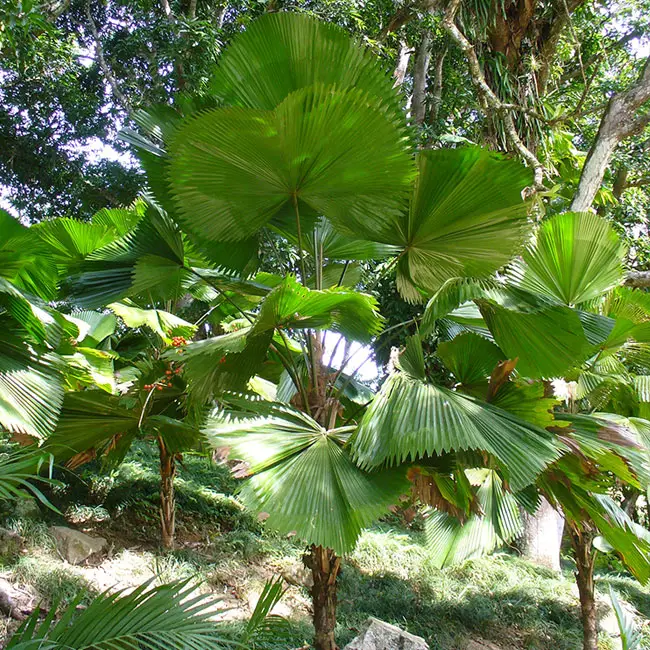
The Ruffled Fan Palm Tree, scientific name Licuala grandis, is native to the rainforests and tropical regions of Vanuatu, an island nation located in the South Pacific Ocean. It is also found in other parts of the Pacific Islands.
This palm species thrives in the humid, warm, and tropical climates of these regions and has become a popular ornamental palm tree in various parts of the world due to its striking appearance and unique ruffled leaves.
Quick Facts:
| Scientific name: | Licuala grandis |
| Common names: | Ruffled Fan Palm, Licuala Palm, Vanuatu Fan Palm, Palas Palm, and Ruffled Lantan Palm. |
| Origin: | Native to the Vanuata Islands, off the coast of Australia. |
| Growth Rate: | Slow. Up to 8ft tall with a spread of 5-10ft wide. |
| Cold Tolerance: | USDA Zones 10b (35 to 40 F) to 11 (above 40 F). |
| Light Req: | Partial shade. |
| Water Req: | High |
| Soil Req: | Widely adaptable. |
| Fruit: | Yes. Red. Not edible. |
| Propagation: | By seeds, germinating in 3-6 months with heat |
Identifying Characteristics of the Ruffled Fan Palm
Featuring a slender, single trunk with a diameter of 4-5 inches, the Ruffled Fan Palm takes several years to mature. It is distinguished by its unique palmate, or fan-shaped leaves, adorned with captivating split patterns that make it a standout in any setting.
The leaves are circular, lush green, glossy, and ruffled, hence the name “Ruffled Fan Palm,” with notched tips. These leaves measure approximately 22 inches in diameter.
Flowers and Fruits of the Ruffled Fan Palm
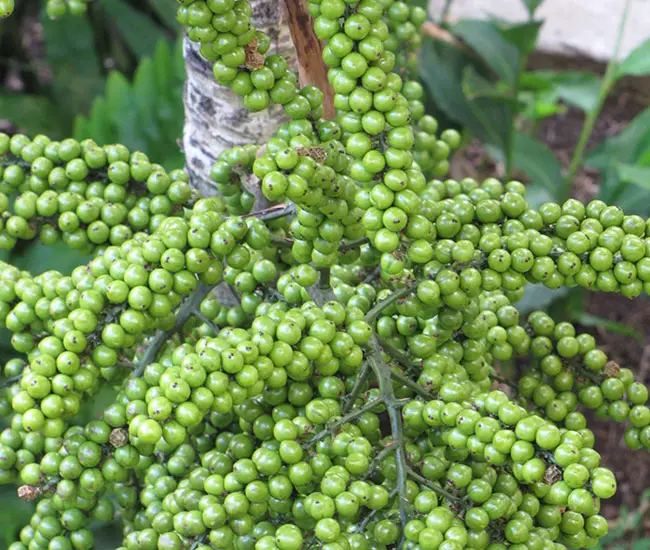
The inflorescence emerges from among the leaves, bearing bisexual flowers with both male and female reproductive organs on the same flower.
The Ruffled Fan Palm produces marble-like green fruit that turns red when ripe. These berry-like fruits are round and contain a single seed.
Caring for the Ruffled Fan Palm
Licuala grandis is a highly attractive, slow-growing palm that can reach heights of 5-10 feet, but typically doesn’t exceed 6 feet in height with a spread of 5-10 feet.
This palm can withstand temperatures as low as 32°F when mature enough and is well-suited for cultivation in USDA Zones 10b (with temperatures between 35 and 40°F) to Zone 11 (above 40°F). It thrives best in partial shade and should be protected from direct sunlight. Adequate watering with good drainage is essential.
To prevent nutritional deficiencies, it’s advisable to apply a high-quality palm fertilizer with a continuous-release formula twice a year during the growing season.
Propagation is typically done by seed, although it may take as long as 12 months for the seeds to sprout.
Ruffled Fan Palm Pictures
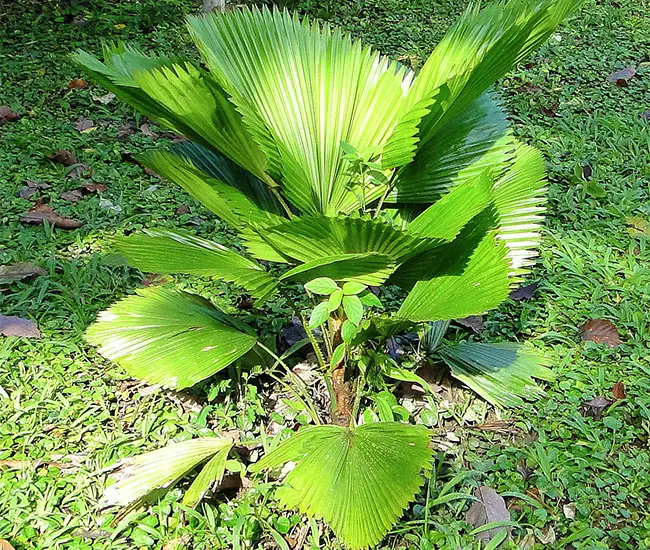
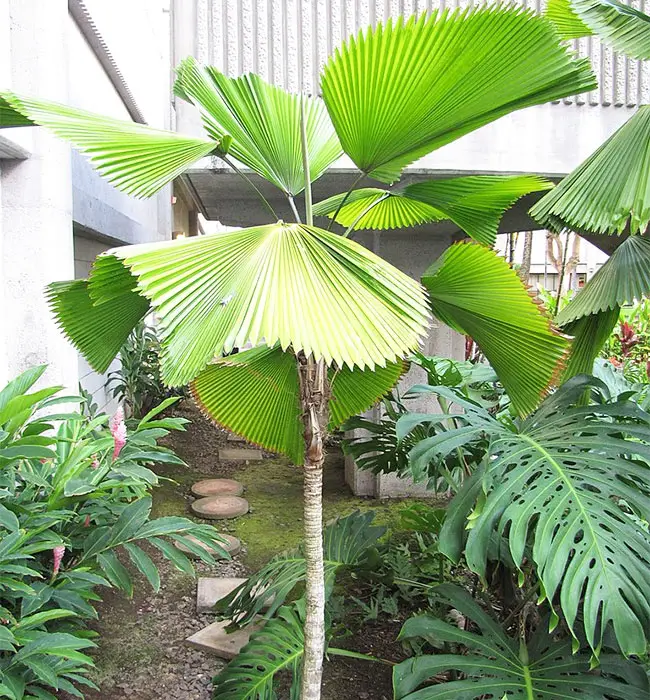
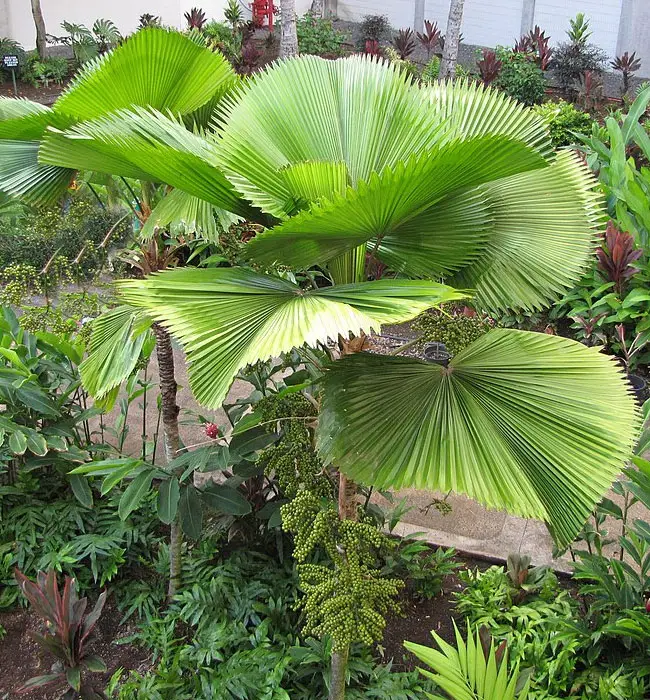
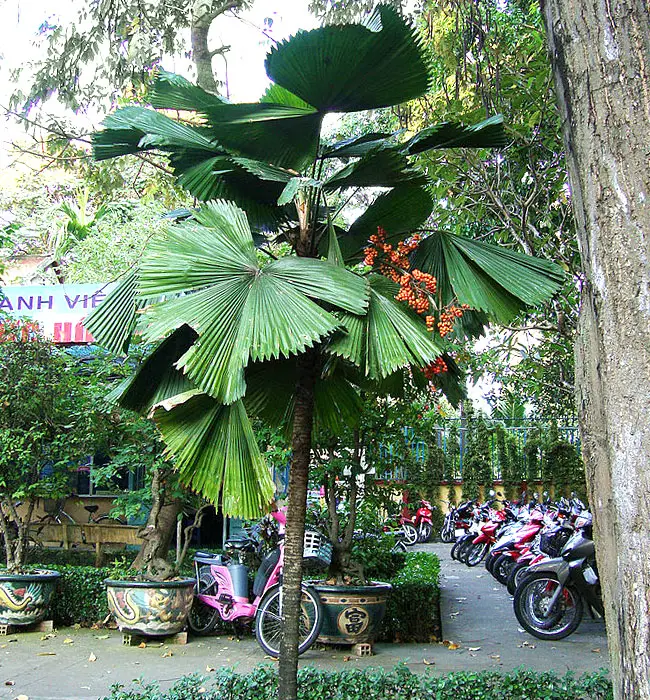
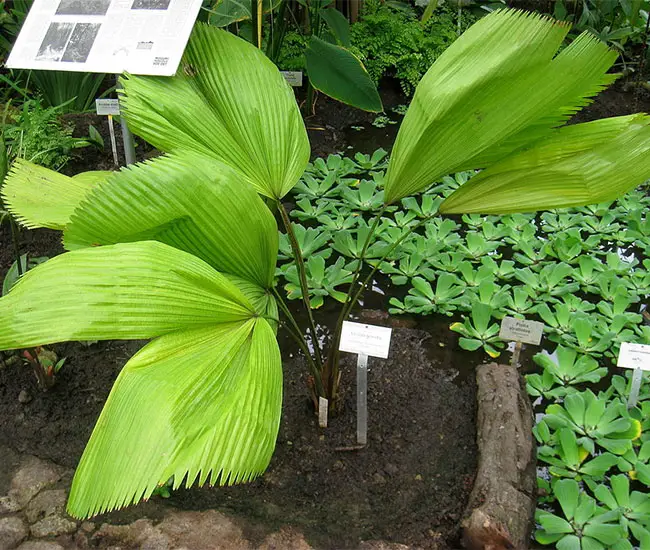
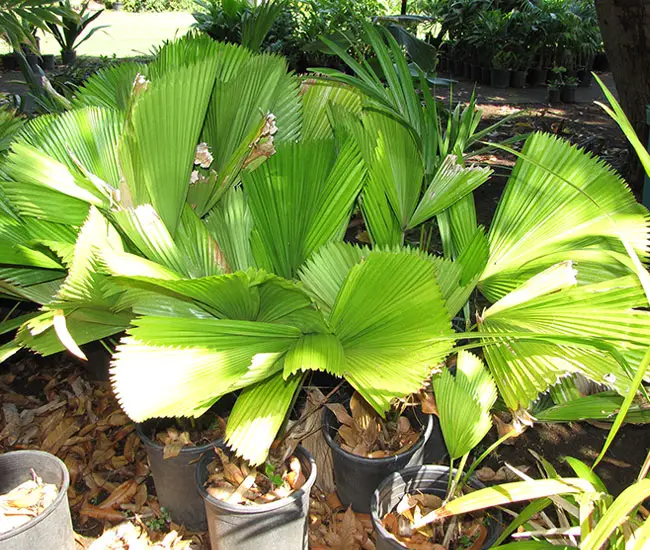
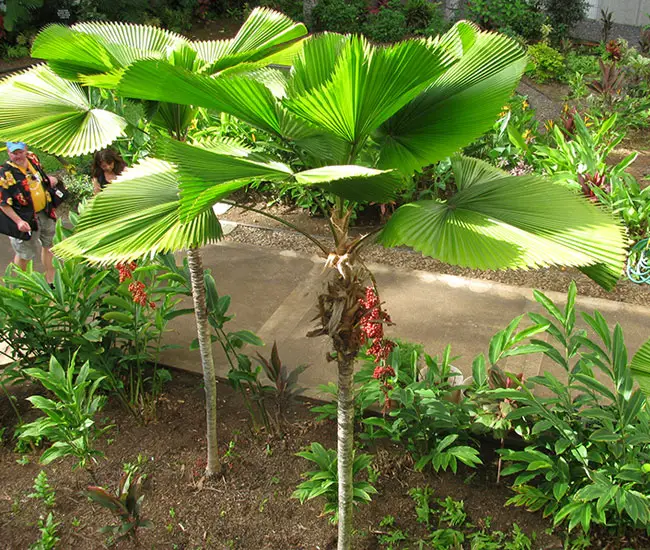
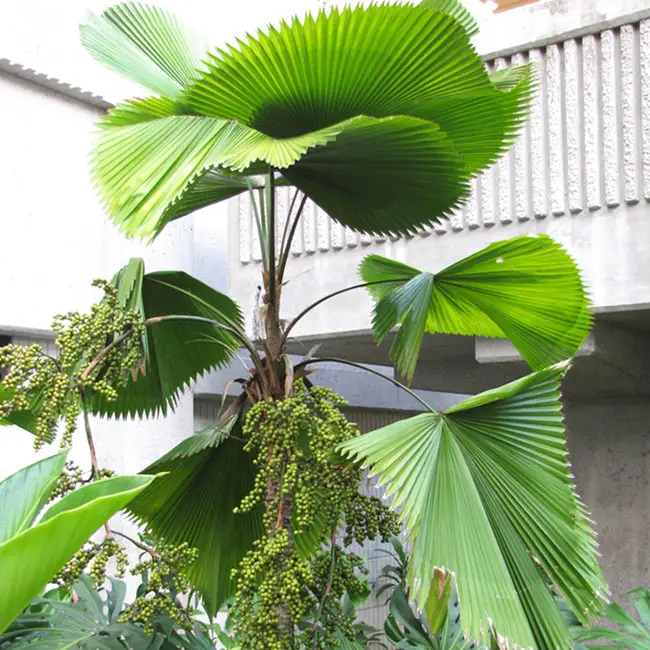

I love the palm
May I know if any part of this palm poisonous? Thank you.